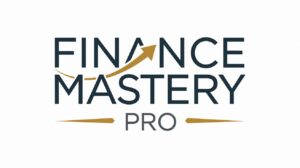Table of Contents
Introduction: Tackling Debt with Effective Strategies
Debt can often be an intimidating notion — it can feel like a weight around one’s financial neck, preventing them from moving forward financially as they wish. From credit card debt, student loans, and personal loans, to mortgages, tackling and overcoming debt is a great way to progress towards financial independence. Nevertheless, not all debt repayment plans are equal. Two of the most common are the Debt Snowball method and the Debt Avalanche method. Knowing how these two strategies differ could help you determine which one suits your financial status and personality best.
In this comprehensive guide, we will discuss both the Debt Snowball method and the Debt Avalanche method and try to find out which one is better and why. By the time you finish reading this, you will be in a position to know which debt repayment strategy is most suitable for you and how to achieve financial freedom through it.
Understanding Debt: The Basics
Before delving into the repayment strategies it is crucial to understand the basics of debt and what it means to your financial health. So let’s do that.
What is Debt?
Debt is an amount of money borrowed that must be repaid along with interest at a certain time. Some of the typical kinds of debt are:
- Credit Card Debt: Has relatively high interest rates and is a revolving credit, which means you can borrow up to a certain limit and pay it back over time.
- Student Loans: For education funding, are likely to have lower interest rates and longer repayment terms.
- Personal Loans: Debt consolidating or large purchases are some of the purposes of unsecured loans.
- Mortgages: Real estate, that has long-term repayment and lower interest rates than other debts, has been used to secure loans.

The Impact of Debt on Financial Health
Carrying debt is not only a matter of your bank account. It can affect your credit score, make you more financially stressed, and prevent you from saving or investing. You need to know how to manage and get rid of debt to maintain financial stability and meet your financial objectives in the future.
Debt Repayment Strategies: An Overview
There are many ways to pay off debt, but two of the most commonly suggested are the Debt Snowball and the Debt Avalanche. Either has its way of dealing with the debt and advantages, and the appropriate one depends on your financial status and preference.
Debt Snowball Method
The Debt Snowball method is about paying off debts first by starting with the ones that have the smallest balance and then working your way up to the ones with the largest balance, despite having higher interest rates. Here’s how it works.
- List Your Debts: Put all your debts in order of size from smallest to largest.
- Minimum Payments: Keep on paying the minimum balance on all your debts except the one with the lowest balance.
- Target the Smallest Debt: Any extra funds should be used to pay off the smallest debt first.
- Snowball Effect: Once the smallest debt is paid off, then move to the next smallest and continue from there, increasing the amount by the amount you were paying on the previous debt.
Example:
- Debt A: $500 at 5% interest
- Debt B: $1,500 at 7% interest
- Debt C: $3,000 at 4% interest
You would focus on paying off Debt A first, then Debt B, and finally Debt C.
Debt Avalanche Method
The Debt Avalanche method focuses on paying off debts first by interest rates, beginning with the highest. Here’s how it works:
- List Your Debts: Put all your debts in order of their interest rate starting from the highest to the lowest.
- Minimum Payments: Keep on paying the minimum balance due on all your debts, with the exception of the one that has the highest annual interest rate.
- Target the Highest Interest Debt: Any extra funds should be used to pay off the debt with the highest interest rate first.
- Avalanche Effect: Once the highest interest rate debt is paid off, then move to the next highest and focus on that one, while also adding the amount you were paying on the previous debt towards the new target.
Example:
- Debt A: $500 at 5% interest
- Debt B: $1,500 at 7% interest
- Debt C: $3,000 at 4% interest
You would focus on paying off Debt B first, then Debt A, and finally Debt C.
Debt Snowball Method: Detailed Analysis
The Debt Snowball method is often favored for its psychological benefits. But first, let’s see how it works and what are the advantages and disadvantages of that.
How the Debt Snowball Works
- List Debts by Balance: Sort your debts by balance, from smallest to largest.
- Minimum Payments: Keep up minimal payments towards all the debts, except the smallest one.
- Focus on the Smallest Debt: You should only try and put any extra money towards paying off the smallest debt.
- Celebrate and Move Forward: After the smallest debt is paid off, celebrate the victory and use the money that you were using to pay that debt to the next smallest debt.
Advantages of the Debt Snowball
- Psychological Motivation: Having the feeling of paying off smaller debts can also be quite motivating as it gives one a feeling of accomplishment and thus the motivation to continue with the process.
- Simplicity: The method is also quite straightforward to follow so that it can be easily understood by those who are new to debt repayment.
- Momentum Building: The freed-up funds after you eliminate each debt begins to snowball into larger payments for subsequent debts.
Disadvantages of the Debt Snowball
- Higher Interest Costs: Not paying attention to high-interest debts might cost you more in interest over time than other ways of handling your debts.
- Potential for Less Savings: Focusing on smaller debts may delay the repayment of larger, costlier debts, and could even extend the time overall to repay. This is because when you clear small debts first, you find yourself with more money to pay off the remaining, and likely higher, balance of the larger debts. So though it may feel good to check off small debts one at a time, it could end up costing you more in the long run.
Debt Avalanche Method: Detailed Analysis
The Debt Avalanche method is designed to help you pay off your debts as soon as possible, so you can avoid paying more interest than necessary. This is where you’ll find an in-depth look at its mechanics, benefits, and drawbacks.
How the Debt Avalanche Works
- List Debts by Interest Rate: Sort your debts by interest rate from highest to lowest.
- Minimum Payments: It is advisable to pay only the minimum required on all debts, except for the one with the highest annual interest rate. This can help you avoid paying more in the long run.
- Focus on the Highest Interest Debt: Any further funds should be allocated towards paying off the debt with the highest interest rate.
- Progress Down the List: Once the highest interest rate debt is paid off, then move to the next highest and use the freed-up funds accordingly.
Advantages of the Debt Avalanche
- Interest Savings: This way, you avoid paying more interest on high-interest debts than necessary. Thus, by paying off high-interest debts first, you save on the total interest charges.
- Faster Debt Repayment: This method will often result in paying off debt more quickly than methods that focus on the size of the balance rather than the interest rates.
- Financial Efficiency: To minimize the cost of debt, maximize the use of your extra funds.
Disadvantages of the Debt Avalanche
- Less Immediate Motivation: It may take longer to realize the benefits as well because higher-interest debts are usually more substantial.
- Complexity: Needs more accurate tracking of interest rates and distinguishing between different types of debts – it is slightly more complex than the Snowball method. It can be slightly more complex than the Snowball method.
Comparing Debt Snowball and Debt Avalanche
Depending on your financial situation, and preference, read below on when to use the Debt Snowball or Debt Avalanche method. Here is a side by side comparison to help you choose which strategy might be the best for you.
| Aspect | Debt Snowball | Debt Avalanche |
|---|---|---|
| Primary Focus | Smallest balance first | Highest interest rate first |
| Motivation Level | High (quick wins) | Moderate (longer time for the first payoff) |
| Total Interest Paid | Higher | Lower |
| Repayment Speed | Slower in total (may vary based on debt sizes) | Faster (more efficient in interest savings) |
| Psychological Impact | Boosts morale with early successes | Less immediate satisfaction, but a strategic advantage |
| Best For | Individuals who need motivational boosts to stay on track | Those focused on minimizing interest and maximizing efficiency |
Each of the two strategies has its advantages, and the best option is always depending on your specific situation and what works better for you.
Consider Your Financial Goals
1. Minimize Interest Payments: If you are primarily concerned with paying off debt as quickly as possible and saving on interest, the Debt Avalanche method is preferred.
2 . Boost Motivation: In case you need frequent milestones to keep you motivated and find it challenging to stay motivated, the Debt Snowball method may be what you need.
Assess Your Debt Profile
1. High-Interest, Large Balances: The Debt Avalanche is best if you have different interest rate debts as it attacks the highest interest debts first.
2. Multiple Small Debts: If you have several small debts then the Debt Snowball method can help you get rid of them quickly, by removing the number of creditors and simplifying your financial landscape.
Personal Preferences and Discipline
1. Discipline Level: The Debt Avalanche requires more discipline and commitment, which might not show results as quickly.
2. Need for Quick Wins: If you need regular motivation and thrive on quick achievements, then the Debt Snowball structure should suit you well.
Implementing Your Chosen Strategy
Once you have chosen a strategy then you need to make sure that it is well implemented. Here are some actionable steps to get started:
1. List All Your Debts
You need to create a complete list of all your debts, balance, interest rates, minimum monthly payments, and due dates. This overview is very important in helping you design your repayment plan.
2. Create a Budget
Develop a realistic budget that includes all your income and all your expenses. You should also try to find where you can reduce your expenditure to be able to put more money towards clearing your debts.
3. Allocate Extra Funds
Figure out how much more you can afford to pay towards your debts every month. This could be through cutting down on expenses, getting a higher income, or both.
4. Automate Payments
To avoid missing a payment and to keep up the repayment effort, set up automatic payments for your debts.
5. Monitor Your Progress
It is important to keep a check on your debt repayment progress regularly. To keep the motivation high, milestones should be celebrated and the budget should be adjusted as necessary so as not to drift from the path.

Additional Tips for Successful Debt Repayment
No matter what strategy you select to repay your debt, here are some tips.
1. Avoid New Debt
It is not wise to pay off debt and get more debt. That means not buying things that are not needed, not using credit cards properly, and generally being financially undisciplined.
2. Build an Emergency Fund
Not having an emergency fund means you might end up using credit cards or loans when unexpected expenses come along, which should be avoided as it can throw off your debt repayment plan.
3. Increase Your Income
Looking for ways to increase your income: a side hustle, freelancing, or getting a better job? It is always helpful to have some extra income to put towards accelerating your debt repayment.
4. Negotiate with Creditors
If you are having trouble making payments, you may want to try to work out a deal with your creditors to chip away at the interest or extend the time you have to pay everything back. This will make your debt more affordable and you’ll repay it faster.
5. Stay Committed and Patient
Repaying debt is a marathon, not a sprint. Stay the course with your plan, have faith in the pace of your progress, and keep a positive attitude throughout the journey.
Case Studies: Real-Life Applications
Knowing how other people have used these tactics in the past can be quite helpful.
Case Study 1: Sarah’s Debt Snowball Success
Background: Sarah had three credit card debts:
- Card A: $1,200 at 6% interest
- Card B: $3,500 at 18% interest
- Card C: $500 at 12% interest
Strategy: For quick wins and motivation, Sarah chose the Debt Snowball method.
Implementation:
- List Debts: Card C ($500), Card A ($1,200), Card B ($3,500)
- Extra Funds: She increased the debt repayment by $200 per month.
- Pay Off Card C: Within three months, Card C was paid off.
- Move to Card A: The $200 extra was added to the minimum payment on Card A which sped up its payoff.
- Finally, Card B: Once Card A was eliminated, Sarah threw all extra funds into Card B.
Outcome: Within 18 months, Sarah had eliminated all of her credit card debt. The quick elimination of Card C enabled her to keep going, which led to her paying off her highest-interest debt, Card B, as well.
Case Study 2: John’s Debt Avalanche Efficiency
Background: John had three loans:
- Loan A: $10,000 at 5% interest
- Loan B: $5,000 at 15% interest
- Loan C: $2,000 at 10% interest
Strategy: John has selected the Debt Avalanche approach to reduce his interest expense.
Implementation:
- List Debts: Loan B (15%), Loan C (10%), Loan A (5%)
- Extra Funds: He put another $300 per month towards debt repayment.
- Pay-Off Loan B: John leveraged all the additional funds available, focusing only on Loan B, paying it off in just 20 months.
- Move to Loan C: Loan C was then paid off in 9 months by the $300 being applied to it.
- Finally, Loan A: All the extra funds were put towards Loan A, and it was paid off in 33 months.
Outcome: He also saved about $2,500 in interest over the time he paid off all his debts in 33 months than the Debt Snowball method. John was very disciplined in his approach to make sure that he gets the maximum efficiency in debt repayment.
Common Pitfalls and How to Avoid Them
It is laudable to embark on a debt repayment journey, but it is crucial to avoid common pitfalls that may slow down your progress.
1. Underestimating Expenses
Pitfall: Not including all expenses can result in financial shortfalls that were not anticipated, and that can make it difficult to stick to your repayment plan if you do not know about them.
Solution: Establish a clear and comprehensive budget that comprises both the fixed and variable costs. It is crucial to update and change your budget frequently as your financial status changes.
2. Ignoring High-Interest Debts (if Using Snowball)
Pitfall: Not focusing on the small debts can let high-interest debts grow and you can end up owing more than you did before.
Solution: Although you are using the Debt Snowball method, it is still recommended that you try to pay more than the minimum amounts on the higher-interest debts whenever possible so that you don’t end up paying more in interest.
3. Skipping Payments
Pitfall: Missing payments can also lead to penalties such as late fees, and higher interest rates, and even worse, it can harm your credit score and thus, slow down your debt repayment plan.
Solution: To avoid missing a due date, set up automatic payments. If you can’t automate, set reminders and try to pay on time in your budget.
4. Accumulating New Debt
Pitfall: Trying to repay existing debt while bringing on new debt can harm your financial situation and extend your repayment timeline.
Solution: Have disciplined spending habits. Do not buy what is not needed, use cash not credit cards, and maybe even freeze your credit card until you get your debts under control.
5. Lack of Emergency Fund
Pitfall: Not having an emergency fund can force you to dip into your debt repayment funds for unexpected expenses if you do not have one. This can slow down your progress.
Solution: However, while paying debt, try to put away some money for a small emergency fund, say $1,000. It covers small surprises. So, focus on debt first, then save up for an emergency fund.
When to Consider Professional Help
However, at times, it may happen that no matter how hard one tries, debt control can become overwhelming. Sometimes it is good to seek professional help in such cases.
1. Credit Counseling Services
They can provide you with personalized advice and assist you in coming up with a workable debt repayment plan. They may also attempt to negotiate with creditors on your behalf to lower the interest rates or to obtain better conditions.
2. Debt Consolidation Loans
Simple. When you combine multiple debts into one loan, at a lower interest rate, it can be easier to repay and could save you on the interest you pay overall. But you should know what you’re getting into, and make sure it matches up with what you’re trying to accomplish financially.
3. Debt Settlement
Debt settlement is the process of negotiating with creditors to accept less than the full amount of the debt owed. It can harm your credit score and should be used with caution, and more often as a last resort.
4. Bankruptcy
Bankruptcy filing can eliminate debts but it will hurt your credit score and financial future. It is a last resort that should only be attempted with the advice of a legal professional.
Maintaining Financial Health Post-Debt Repayment
A milestone is to eliminate debt, but maintaining financial health is a continuing process that requires diligence and good habits.
1. Continue Budgeting
Although you should stop using a budget when you are out of debt, it is still worthwhile to keep on using it when it comes to handling your income and expenses. It helps you to maintain the financial discipline you desire and to avoid getting into debt again.
2. Build and Grow Savings
The focus should be on establishing an emergency fund and saving for future needs like a down payment on a home, retirement, or education. Saving regularly is a cornerstone of long-term financial stability.
3. Invest Wisely
Once you have a good savings plan, it is time to start investing to build your wealth. To minimize risk and maximize return, divide your investment among different vehicles that are compatible with your financial goals.
4. Monitor Your Credit
It is advisable to check on your credit reports regularly to check for accuracy and to see where there is room for improvement. Having a good credit score means a better financial situation and more opportunities, for example, better interest rates for loans and mortgages.
5. Practice Mindful Spending
Having mindful spending habits means knowing the difference between need and want. Spend your money on what matters — what you value and what will help you achieve your long-term goals instead of mindlessly spending it.
Conclusion: Empowering Your Financial Future
Repaying debt is a process that has to be done with a plan, discipline, and spirit. The important thing is to keep the payment steady regardless of the method chosen between the Debt Snowball and the Debt Avalanche. As such, it is crucial to know the differences between the two strategies in order to know which one is most suitable for achieving financial freedom as well as personal reasons.
Get more information about the type of debt, the amounts owed, interest rates, and minimum payment due. Remember every step you take to reduce and eliminate debt gets you on your way to financial freedom, to being able to build a secure and prosperous future. Stay focused, celebrate your progress, and don’t be surprised if your financial situation changes as you progress through your financial journey. A debt-free life is possible if you are determined and have the right strategy.
FAQs :
1. How can I delegate the debt repayment agenda when I have several debts at different interest rates?
A: The two most effective strategies are the Debt Snowball method and the Debt Avalanche method. The Snowball method is the theory of paying off the smallest debts first to build momentum while the Avalanche method is paying debts with the highest interest rates first to minimize overall interest payments. Which approach to choose depends on whether you decide to go for psychological motivation or long-term savings.
2. Is it better to consolidate all your debt into one loan, or to pay off each account on its own?
A: Debt consolidation can make repayments easier by merging several debts into a single loan at a lower interest rate. This is good if you have problems with many due dates and high-interest credit cards. But if consolidation extends the time of the loan, you may very well wind up paying more in interest over the life of the loan. You should always consider the total cost of both options before making a decision.
3. Can negotiating with creditors help me avoid some debt?
A: Yes — creditors are often willing to negotiate lower interest rates, longer repayment terms, or even receipt of a lump sum that is less than the entire amount owed. If you are in financial difficulty, it is advisable to try and make contact with your creditors as soon as you can to request better repayment terms. Deciding on a debt settlement company or financial advisor may also increase your likelihood of achieving successful negotiation.
4. How can I reduce or eliminate debt and at the same time increase my savings and investment?
A: The use of money is also important when it comes to balancing debt repayment and saving. It is wise to assign extra income, tax refunds, or bonuses to debt while keeping an emergency fund. Furthermore, using side income or passive income streams to make one-time larger payments while leaving long-term investments like retirement accounts untouched can help to push debt payoff without compromising your financial future.










Thanks for the detailed explanation it helps! 🙂